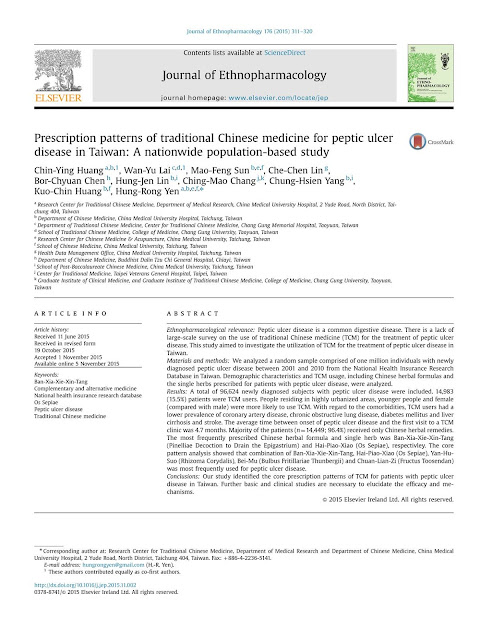J Ethnopharmacol. 2015 Nov 5. pii: S0378-8741(15)30205-1. doi: 10.1016/j.jep.2015.11.002. [Epub ahead of print]
Prescription Patterns of Traditional Chinese Medicine for Peptic Ulcer Disease in Taiwan: A NationwidePopulation-based Study.
胃潰瘍疾病之中醫藥處方研究
Abstract
ETHNOPHARMACOLOGICAL RELEVANCE:
MATERIALS AND METHODS:
RESULTS:
CONCLUSIONS:
Copyright © 2015. Published by Elsevier Ireland Ltd.
KEYWORDS:
Ban-Xia-Xie-Xin-Tang; Complementary and alternative medicine; National health insurance research database; Os Sepiae; Peptic ulcer disease;Traditional Chinese medicine







